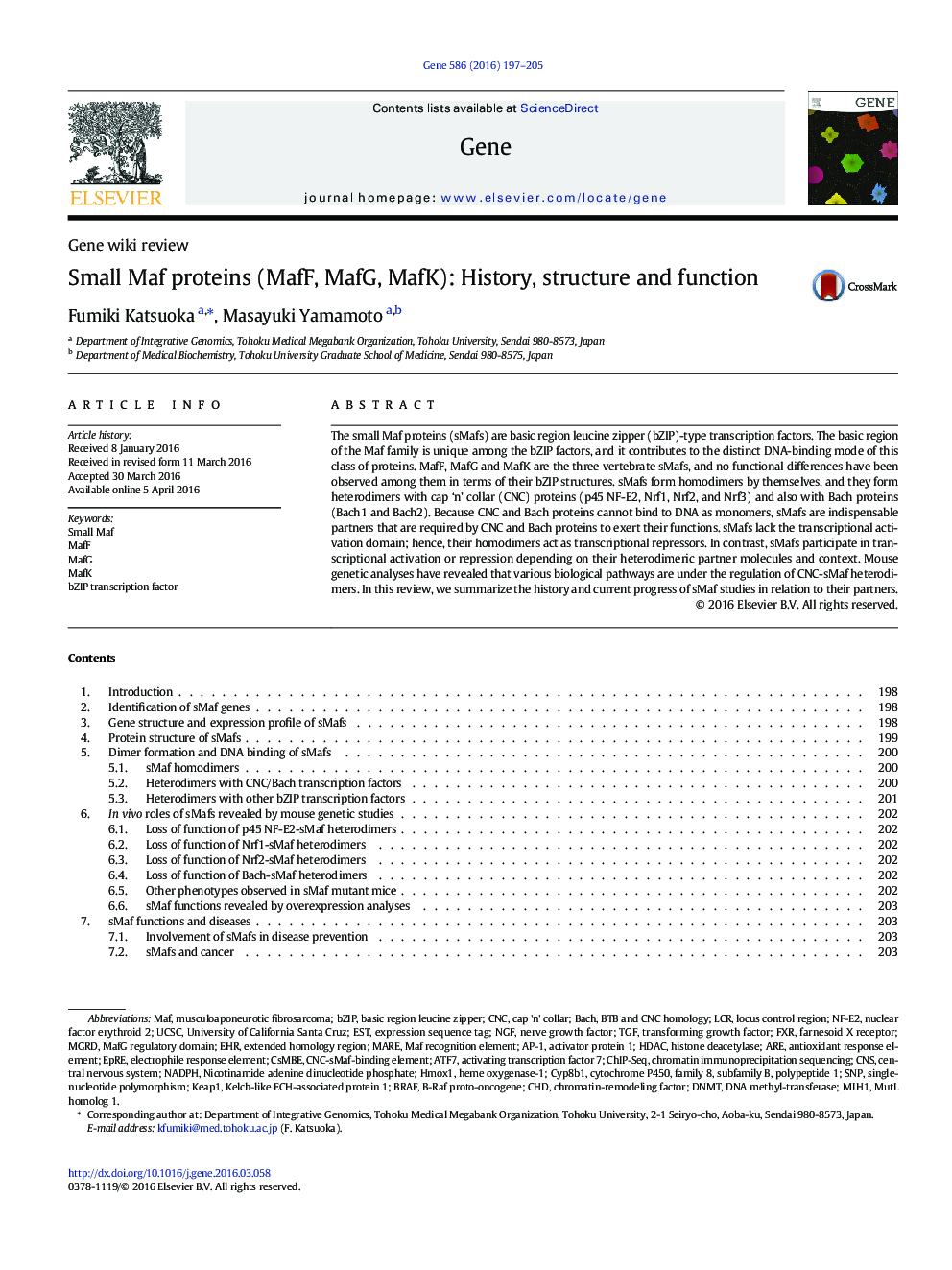| کد مقاله | کد نشریه | سال انتشار | مقاله انگلیسی | نسخه تمام متن |
|---|---|---|---|---|
| 5905122 | 1159836 | 2016 | 9 صفحه PDF | دانلود رایگان |

- The small Maf (sMaf) proteins are bZIP-type transcription factors.
- sMaf proteins form homodimers and heterodimers with CNC and Bach proteins.
- sMaf proteins participate in activation or repression depending on their partners.
- Various biological pathways are under the regulation of sMaf-containing dimers.
The small Maf proteins (sMafs) are basic region leucine zipper (bZIP)-type transcription factors. The basic region of the Maf family is unique among the bZIP factors, and it contributes to the distinct DNA-binding mode of this class of proteins. MafF, MafG and MafK are the three vertebrate sMafs, and no functional differences have been observed among them in terms of their bZIP structures. sMafs form homodimers by themselves, and they form heterodimers with cap 'n' collar (CNC) proteins (p45 NF-E2, Nrf1, Nrf2, and Nrf3) and also with Bach proteins (Bach1 and Bach2). Because CNC and Bach proteins cannot bind to DNA as monomers, sMafs are indispensable partners that are required by CNC and Bach proteins to exert their functions. sMafs lack the transcriptional activation domain; hence, their homodimers act as transcriptional repressors. In contrast, sMafs participate in transcriptional activation or repression depending on their heterodimeric partner molecules and context. Mouse genetic analyses have revealed that various biological pathways are under the regulation of CNC-sMaf heterodimers. In this review, we summarize the history and current progress of sMaf studies in relation to their partners.
Journal: Gene - Volume 586, Issue 2, 25 July 2016, Pages 197-205